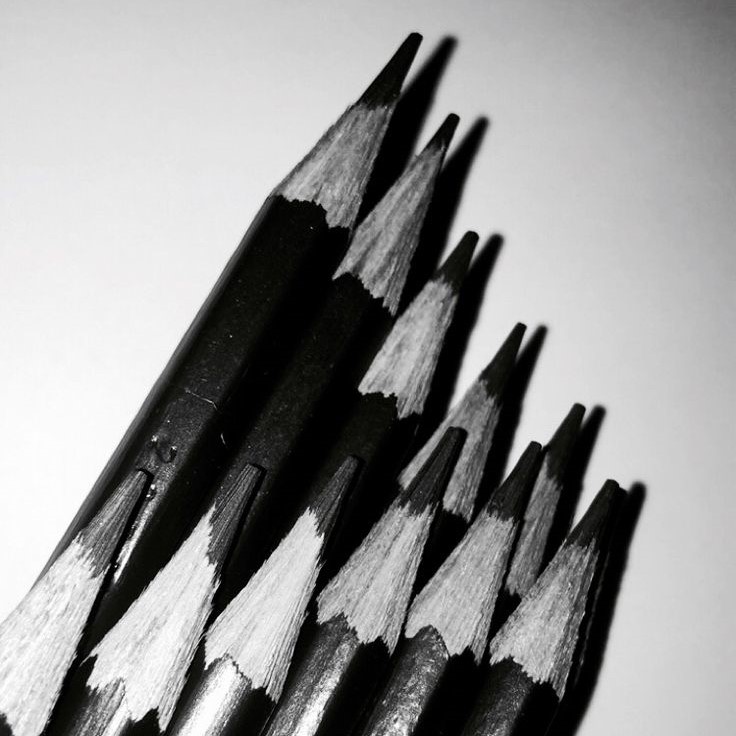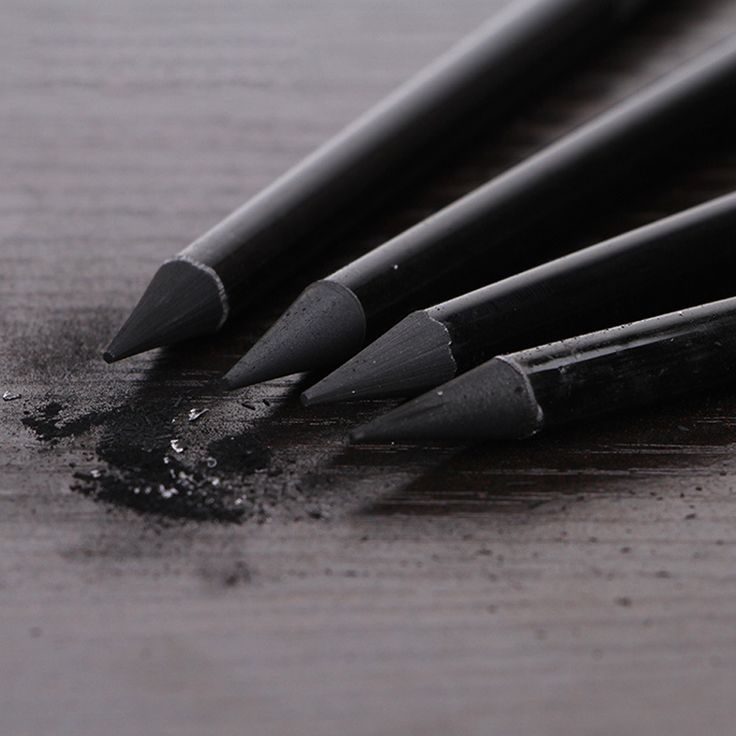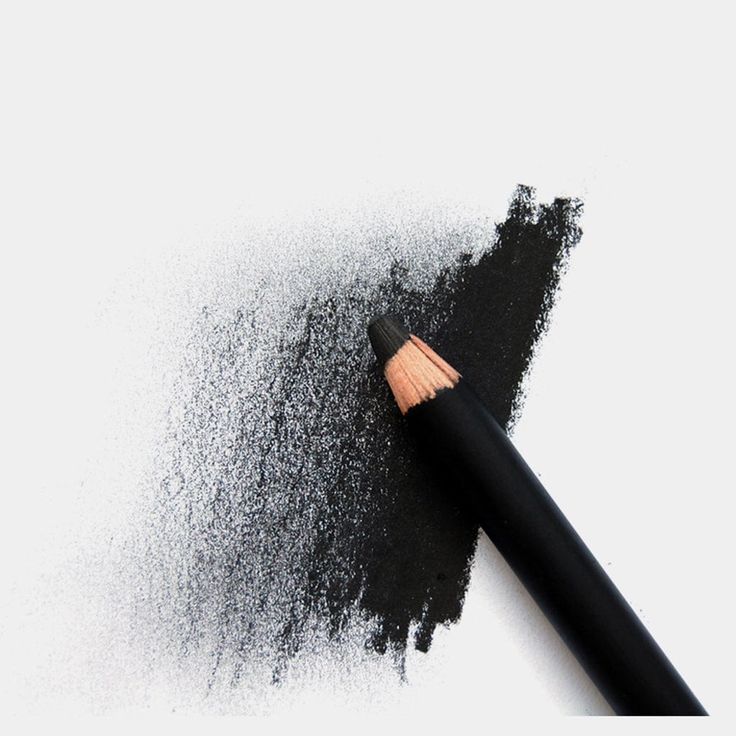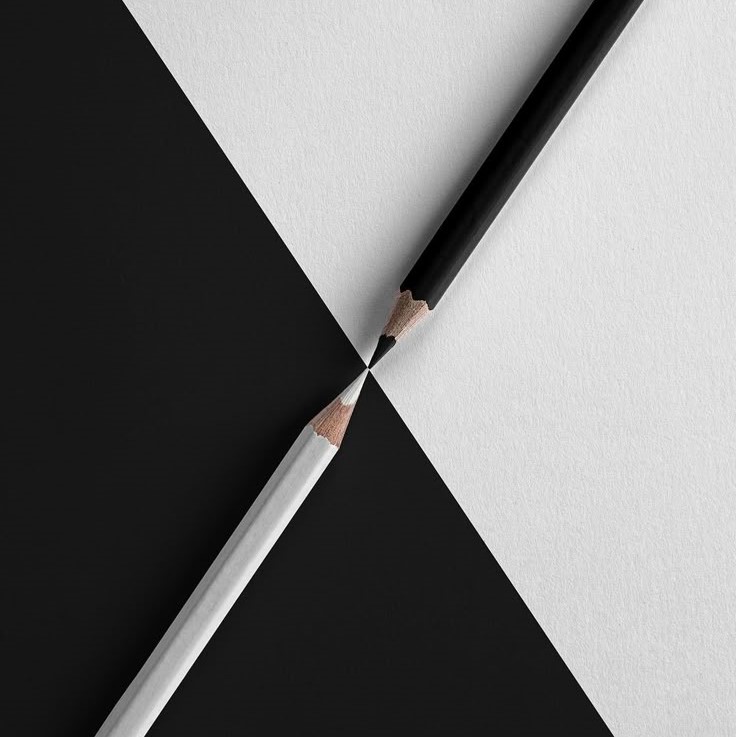Introduction
Charcoal pencil is a popular choice among artists for creating striking and dynamic artwork. They offer rich, deep blacks and versatile shading options. Let’s explore what these tools are and the variations available.

What are Charcoal Pencils?
Charcoal pencils are art tools made from compressed charcoal encased in wood. They combine the richness of charcoal with the structure of a pencil. Unlike loose charcoal sticks, charcoal pencils provide controlled precision for detailed work. These pencils are ideal for sketching, shading, and creating high-contrast imagery. They come in varying degrees of hardness, allowing for lighter or darker strokes.
Types of Charcoal Pencil
There are different types of charcoal pencil tailored to various artistic needs:
- Soft Charcoal Pencil: These create darker, rich strokes. They are best for shading and bold lines.
- Medium Charcoal Pencil: Ideal for creating balanced lines and controlled shading. Great for detailed areas.
- Hard Charcoal Pencil: These produce lighter lines and are perfect for fine detailing.
Additionally, some artists use tinted charcoal pencil which include subtle colors for creative effects. Water-soluble charcoal pencil also allow blending with water for softer tones. Choosing the right type depends on the style and purpose of your artwork.
Essential Tools for Charcoal Drawing
Creating impressive charcoal art requires the right tools. Proper supplies help achieve precision and creativity.
Must-Have Supplies
To get started with charcoal drawing, gather these essential supplies:
- Charcoal Pencils: These are the base of your artwork. Use soft, medium, and hard varieties for flexibility.
- Erasers: Kneaded erasers are excellent for soft corrections. Vinyl erasers work for sharp, clean lines.
- Blending Tools: Blending stumps and tortillons help smooth out charcoal and create soft gradients.
- Sharpener: A high-quality sharpener ensures precise pencil tips for detailed work.
- White Chalk or Pencil: Useful for adding highlights or contrast to your drawings.
- Paper Clips or Tape: These hold your artwork securely while you work.
Choosing the Right Paper
Paper quality affects the final look of your charcoal art. Choose the correct type for the best results:
- Texture: Select textured papers like cold press or rough surfaces to hold charcoal better.
- Thickness: Use thicker paper to resist tearing and smudging during heavy layering.
- Color: Try off-white or toned papers for depth and unique backgrounds.
Explore options to find the paper that complements your art style. Balance texture, weight, and tone for optimal performance.
Techniques for Using Charcoal Pencil
Mastering techniques in charcoal drawing elevates your artwork. Charcoal pencil offers endless creative possibilities.
Basic Strokes and Shading
To start, practice basic strokes. Use light pressure for faint lines and heavy for bold. Create hatching, cross-hatching, and stippling effects for texture and depth.
Shading is key in charcoal art. Gradually layer tones for smooth transitions. Use blending tools like stumps for softer effects.
Achieving Depth and Texture
Depth makes your artwork look realistic. Use contrasting light and dark tones. Highlight parts of your drawing with a white pencil or chalk.
For texture, experiment with paper types. Rough paper enhances rugged strokes, while smooth paper allows fine details.
Proper techniques bring life to charcoal art. Regular practice refines your skills and creativity.
Tips for Creating Stunning Charcoal Art
Creating impressive charcoal art requires precision, creativity, and attention to detail. The right techniques will elevate your artwork and give it a professional finish. Below are essential tips to help refine your craft and produce stunning pieces.
Maintaining Clean Edges and Details
Maintaining clean edges is key for clarity and professionalism. Follow these tips to achieve precision:
- Use Sharp Pencil Tips: Keep your charcoal pencil sharp for controlled lines and intricate details.
- Work in Small Sections: Focus on one area at a time to avoid smudges and ensure accuracy.
- Use Erasers Strategically: Kneaded erasers are great for soft corrections, while vinyl erasers create clean marks.
- Minimize Hand Contact: Rest your hand on a barrier, like paper, to prevent smudging your work.
- Layer Gradually: Apply charcoal in layers for cleaner transitions and reduce the risk of overworking lines.
Well-defined edges and crisp details will make your artwork stand out.
Blending Techniques for Smooth Transitions
Smooth transitions between tones create depth and realism. Master blending techniques with these steps:
- Use Blending Tools: Tortillons and blending stumps help achieve soft gradients and polished shading.
- Control Pressure: Light pressure creates subtle blends, while heavier pressure adds bold contrast.
- Experiment with Finger Blending: Carefully use fingers where softer effects are needed, but avoid over-smudging.
- Layer Charcoal Gradually: Build tones slowly for smoother transitions, avoiding sudden changes in contrast.
- Combine Tools: Mix blending tools with erasers to achieve precise textures and seamless tones.
Consistent practice with blending tools and layering will refine your charcoal art techniques. Striking a balance between clean edges and smooth transitions will make your artwork visually striking and technically refined.
Common Mistakes to Avoid
Even skilled artists can make missteps when working with a charcoal pencil. Avoiding common mistakes ensures better results and enhances your artistic process. Let’s address two frequent issues in charcoal drawing and how to overcome them.
Overusing Erasers
Erasers are handy tools, but overusing them can damage your work. Follow these tips to avoid this mistake:
- Think Before You Erase: Carefully plan changes before applying an eraser to your drawing.
- Use Gentle Pressure: Press lightly to avoid tearing the paper or smudging nearby areas.
- Rely on Layering: Build tones gradually instead of removing and reapplying charcoal repeatedly.
- Switch Tools: Use kneaded erasers for soft edits and vinyl erasers for sharp corrections.
Erasers should enhance, not disrupt, your artwork. Using them carefully keeps your drawing clean and polished.
Handling Smudging Properly
Smudging is common in charcoal art but must be managed wisely to maintain quality. Here’s how:
- Work Progressively: Start from the top and move downward to reduce accidental smudges.
- Use a Barrier: Place a clean paper under your hand to protect your drawing.
- Fix Layers Early: Apply fixative spray between layers to lock in your work.
- Control Blending: Blend with tools, not fingers, for precise shading and smoother transitions.
- Avoid Excess Pressure: Pressing too hard while shading can leave unwanted smudges.
Maintaining control over smudging keeps your artwork clear, focused, and visually appealing.
Avoiding these mistakes makes charcoal art more enjoyable and results in professional-quality pieces.
Inspiring Ideas for Charcoal Pencil Art
Charcoal art opens up limitless possibilities for creativity. The rich tones and textures enable artists to explore unique themes and concepts. Let’s discuss inspiring ideas and examples to spark your imagination.
Creative Themes and Concepts
Portraits
- Highlighting Facial Features: Charcoal pencils excel at capturing the nuances of facial features. Their versatility allows for precise detailing of eyes, lips, and nose. Artists can easily adjust the pressure to create fine lines or bold outlines, enhancing the realism of the portrait.
- Conveying Emotions: The rich, deep tones of charcoal are perfect for expressing emotions in portraits. By manipulating shading and highlights, artists can depict feelings such as joy, sorrow, or contemplation. Subtle changes in the texture can dramatically alter the expression.
- Layering Techniques: To achieve depth, artists should use layering techniques. Building up layers of charcoal gradually allows for smoother transitions between light and dark areas, resulting in a more lifelike representation.
- Creating Depth: Utilizing blending techniques, such as smudging with fingers or tools, can help to soften edges and create a three-dimensional effect. This technique adds to the overall depth of the portrait, making the subject feel more alive.
Landscapes
- Dramatic Skies: Charcoal pencils are ideal for creating dynamic skies in landscapes. Artists can use bold, sweeping strokes to convey movement and energy. By combining different shades, they can depict everything from bright midday skies to moody storm clouds.
- Creating Rugged Terrains: The texture of charcoal makes it easy to depict rugged terrains, such as mountains and rocky surfaces. By using varied strokes, artists can illustrate the roughness of the landscape, capturing the viewer’s imagination.
- Effective Shading Techniques: Artists should experiment with shading techniques to create depth in landscapes. Cross-hatching, blending, and layering can all contribute to a more realistic portrayal of natural elements like trees, water, and hills.
- Expressing Light and Shadow: Paying close attention to light sources is essential in landscape drawing. By understanding how light interacts with various elements, artists can create compelling contrasts and depth, enhancing the overall depth of the piece.
Still-Life
- Sketching Everyday Objects: Charcoal pencils allow artists to portray everyday objects, such as fruit, vases, and household items, in visually engaging ways. Close observation of these objects can lead to interesting compositions.
- Attention to Textures: Emphasizing the textures of still-life subjects is key. Artists can utilize various techniques to depict surfaces, such as the smoothness of a ceramic pot or the roughness of a wooden table, adding realism to the artwork.
- Capturing Lighting Effects: The interplay of light and shadow is essential in still-life drawing. Observing how light affects the objects and incorporating those details will create depth and dimension, drawing the viewer’s eye through the composition.
- Composition Arrangements: Effective still-life arrangements involve thoughtful compositions. Positioning objects in an eye-catching manner and exploring different angles can result in dynamic and appealing artworks.
Abstract Art
- Dramatic Contrasts: Charcoal is an excellent medium for creating dramatic contrasts in abstract art. The ability to achieve deep blacks and soft grays allows artists to play with light and shadow, evoking various emotions and feelings.
- Exploring Shapes: Abstract art often focuses on shapes and forms. Artists can use charcoal pencils to experiment with freeform lines and geometric structures, resulting in interesting combinations that challenge viewers’ perceptions.
- Textural Variety: The textural quality of charcoal can add depth to abstract pieces. Combining different techniques, such as rough strokes and smooth shading, helps create visual tension and interest within the artwork.
- Emotional Impact: Abstract works created with charcoal can evoke powerful emotions. By manipulating line, contrast, and texture, artists can create pieces that resonate with viewers on a deeper level, encouraging interpretation and reflection.
Fantasy Themes
- Imagining Mythical Creatures: Charcoal pencils can be used effectively to bring mythical creatures to life. Artists can sketch dragons, fairies, or otherworldly beings, employing dynamic poses and fantastical designs to showcase their imagination.
- Creating Surreal Landscapes: Artists can also use charcoal to create surreal landscapes that transport viewers to other realms. Combining dreamlike elements with realistic techniques can form a striking visual narrative that captivates the imagination.
- Combining Elements: Blending fantasy themes with real-world objects enhances the art’s imaginative quality. Incorporating familiar elements into fantastical scenes can spark creativity and invite viewers into a wondrous world.
- Using Light and Shadow for Drama: The dramatic nature of light and shadow in charcoal art can enhance fantasy themes. Creating stark contrasts helps define shapes and adds an enchanting quality to the artwork.
Charcoal’s versatility makes it perfect for modern or classic themes. Combine blending and bold strokes to bring ideas to life.
Examples of Famous Charcoal Artworks
Edgar Degas
- Artistic Focus: Edgar Degas is renowned for his remarkable charcoal drawings, particularly featuring dancers and performers. His work captures the elegance, movement, and expressiveness of his subjects.
- Technique and Style: Degas often employed a combination of charcoal and pastels to create depth and contrast in his drawings. This allowed him to portray light and shadow effectively, emphasizing the physicality of dancers in motion.
- Cultural Impact: His depictions of ballet dancers are celebrated not only for their aesthetic qualities but for their representation of the performing arts in the late 19th century. Degas’s ability to convey the grace and intensity of dance has left a lasting impact on both art and performance.
Kaoru Mansour
- Artistic Themes: Kaoru Mansour is known for utilizing charcoal to explore abstract concepts and nature-inspired themes. His work often reflects a deep connection with the natural world and the fluidity of shapes and forms.
- Style and Approach: Mansour’s use of charcoal allows for a range of textures, from smooth gradients to sharp contrasts. This versatility aids in conveying the emotional resonance of his subjects, whether they are abstract forms or representations of natural elements.
- Contemporary Influence: As a contemporary artist, Mansour employs charcoal in innovative ways, blending traditional techniques with modern themes. His approach is relevant in today’s art scene, where abstract expressions continue to resonate with audiences.
Henri Matisse
- Expressive Portraits: Henri Matisse is famous for his expressive and vibrant portraits, many of which feature his skillful use of charcoal. His ability to capture the essence of his subjects through bold lines and dynamic compositions set him apart as a master of portraiture.
- Artistic Technique: Matisse’s charcoal drawings often emphasized emotional expression. He utilized quick, sweeping strokes to create a sense of movement and fluidity, resulting in portraits that radiate personality and life.
- Legacy: Matisse’s contributions to modern art extend beyond painting; his charcoal works have inspired countless artists. His commitment to explorative and emotional representations continues to influence contemporary portrait artists.
Jean-Auguste-Dominique Ingres
- Mastery of Detail: Jean-Auguste-Dominique Ingres is celebrated for his ability to master fine details using the charcoal pencil, particularly in classical art. His precision and emphasis on form allowed him to create lifelike representations of his subjects.
- Technique and Skills: Ingres often combined charcoal with other mediums to enhance his classical style. His drawings reveal meticulous attention to anatomical accuracy and a profound appreciation for the subtleties of light and shadow.
- Influence on Neoclassicism: As a prominent figure in the Neoclassical movement, Ingres’s use of charcoal played a vital role in defining aesthetic standards of beauty and technique during his time. His works continue to be studied for their exceptional craftsmanship and technical skill.
Exploring masterpieces helps understand techniques and stimulate inspiration. Study these works to refine your artistic vision and skills.
Caring for and Preserving Charcoal Drawings
Charcoal drawings are delicate and prone to smudging or damage. Proper care preserves their quality and longevity. Let’s explore how to protect and store these artworks effectively.
Fixatives and Surface Protection
Using fixatives is essential for safeguarding your charcoal drawings. Follow these guidelines:
- Choose a Quality Fixative: Use a spray fixative designed for charcoal artwork. Opt for matte finishes to reduce glare.
- Apply in Layers: Spray lightly and evenly from a distance of 12 inches. Apply multiple layers for better protection.
- Allow to Dry Completely: Ensure each layer dries thoroughly to prevent smudging.
- Test Before Applying: Test the fixative on a separate piece of art. This avoids unwanted reactions on the main piece.
- Avoid Yellowing: Select an acid-free, archival-quality fixative to keep the charcoal’s original tones intact.
Fixatives form a protective shield, minimizing the risk of smudging or fading over time.
Storage Recommendations
Proper storage ensures your charcoal drawings remain pristine. Consider these tips:
- Use Flat Storage: Store drawings flat to avoid rolling or warping.
- Protect with Glassine Paper: Place glassine paper over the artwork to prevent smudging.
- Select Sturdy Containers: Use acid-free folders or archival-quality boxes for long-term storage.
- Avoid Direct Sunlight: Keep your artwork away from harsh sunlight to preserve the charcoal’s deep tones.
- Control Humidity: Store in a cool, dry environment to protect against mold or paper damage.
- Frame for Display: If displaying, use UV-protective glass and acid-free backing in the frame.
By combining care with the right techniques, your charcoal pencil drawings can retain their beauty for years.



